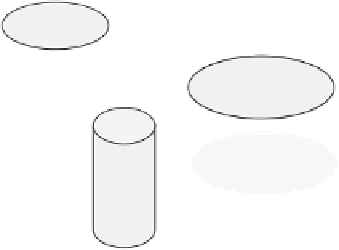Information Technology Reference
In-Depth Information
Quality
Assurance
Architects
External
Project
Management
-Retailers
-End users
Function
Owners
Product
Management
Customers
Stakeholders
(Product)
Project
Team
Internal
-Sales
-Product Mgt
-Factory
Senior
Management
Testing
Process
Office
Black Belt
Community
FIGURE 8.A.3
Customers and stakeholders.
with the discrete CTQ and use indirect measures to make these quantifiable. One
such challenge in the case of the DVD player was the CTQ-DivX Playability feature
(Yes/No). This is discrete but made quantifiable by the team as follows:
DivX playability was an interesting case. An end user would typically want everything
that is called as DivX content to play on his device. This is a free content available on the
Internet and it is humanly impossible to test all. To add to the problems, users can also
create text files and associate with a DivX content as “external subtitles”. Defining a
measurement mechanism for this CTQ was becoming very tricky and setting target even
trickier. So we again had a brainstorming with product management and development
team, searched the Internet for all patterns of DivX content available, and created a
repository of some 500 audio video files. This repository had the complete spectrum
of all possible combinations of DivX content from best case to worst case and would
address at least 90% of use cases. The measurement method then was to play all these
500 files and the target defined was at least 90% of them should play successfully. So
DivX playability then became our discrete CTQ (Shenvi, 2008, p. 99).
Artifacts in the software development cycle needed for this phase include the
requirement specifications. A general rule of thumb governing the definition of upper
and lower specification limits is the measure of success on a requirement, and hence,
the tolerance on the specification often is tighter than the customer measure of success.
If Y
X
n
), then the variation of Y is determined by
the variation of the independent variables x(
s
). The aim of the measure phase is to
define specifications for the individual X's that influence the Y such that the design
is both accurate (on target) and precise (small variation). By addressing the aspect of
target and variation in this phase, the DFSS ensures that the design would fully meet
customer requirements.
=
f
(X
1
,X
2
,X
3
,
...
X
n
), X2
...
















Search WWH ::

Custom Search